Old Woolies fascia exposed as Byker Wetherspoon’s readies for October opening
The Newcastle suburb of Byker will gain a welcome addition when its new Wetherspoon pub – The High Main – opens at 63 Shields Road on 22 October. In the meantime, however, I’ve been getting excited about a fragment of the property’s former life that Wetherspoon’s work has exposed: the old red-tiled fascia from the building’s days as a Woolworths store.
Regular readers will recall that the somewhat complex history of Woolworths’ presence in Byker has been pieced together and told through these pages over the last few years, with the area playing host to three different Woolies stores since the 1920s.
From a combination of my own research and contributions from Soult’s Retail View readers, we know that Byker’s first Woolworths (store #276) opened at 47-49 Shields Road in about August 1927, with a frontage virtually identical to that of the contemporaneous store (later extended) at 19 High Street, Redcar (#275).
Mr S Corson – written about in a previous post – served as store manager either side of the Second World War, but information from Woolworths’ own records of the time show that by 1950 the shop was performing poorly. It had seen two managers’ careers go backwards before the company’s Superintendent and District Office decided it was too small and – even back then, when Shields Road was a much busier retail thoroughfare than today – slightly off-pitch.
In those days, it was still unheard of for Woolworths to abandon an underperforming store, which is why plans were made for relocation rather than closure.
A proposal to relocate the store to 63 Shields Road – the other side of Beavan’s department store – was officially approved by Woolworths’ General Management Committee on 29 July 1954, rubber stamping an urgent approval from earlier in the year (7 April 1954).
However, work was already in progress at the time of approval, suggesting that the new store would have opened in August or September 1954 – well ahead of the crucial Christmas period.

Close-up c1950s view of former Woolworths in Shields Road, Byker. Photo from Newcastle City Council, P&T Image Archive
It’s fascinating to understand the rationale for the relocation at the time, and the scale of Woolworths’ investment. By making the move, the store’s frontage was increased from 6ft to 43ft; its depth from 36ft to 155ft; and its square footage from a tiny 1,970 sq ft to 6,200 sq ft. At a time before any Woolworths stores were self-service (the first self-service Woolies only opened in 1955), the relocation also added an extra 268ft of counters, giving the shop a total counter length of 745ft.
Cost-wise, the freehold purchase price of the property at no. 63 was £35,000, with £15,000 construction costs and £1,500 in agents’ and lawyers’ fees and stamp duty – taking the total cost above £50,00. However, this was expected to drive an increase in sales from £104,288 pa (actual 1954) to £135,000 (forecast 1956, excluding the effect of inflation), with a consequent rise in net profit of just under £2,000 pa.
Whatever the eventual impact of the store relocation – and I don’t have access to any actual trading figures from the new shop – it was sufficient to see Byker keep its Woolworths store for another 30 years, with the doors finally closing on 1 June 1985.
Byker was one of the many underperforming stores to be sacrificed following the company’s spin-off from its US parent in 1982: a store estate of 955 at the time of the deal had shrunk to 745 by the end of 1985, though it would later grow again to more than 800 in the 1990s and 2000s.
Since then, the building has been occupied by the painting and decorating retailer Decorflair – until that business itself collapsed – and most recently by a YMCA charity shop.
However, that wasn’t Byker’s final experience of Woolworths, of course: two decades later, a 95,000 sq ft Woolworths (#1256) launched at the new Newcastle Shopping Park at the top of Shields Road.
Originally conceived as a Big W, that format had been abandoned by the time the new Byker store was ready, so it opened and only ever traded under a ‘Woolworths’ fascia. Inevitably, though, Byker’s third Woolworths incarnation was the most shortlived of the lot, closing on 3 January 2009 in the wake of the company’s collapse. That site has subsequently been taken over by Asda.
So, what exactly can we see of Byker’s middle incarnation of Woolworths, getting on for thirty years after its fascia was last exposed?
Well, following a kind tip-off from Michael Scott, a subscriber to my Soult’s Retail View Facebook Page, I headed off to Byker at the end of last month to check out what was visible.
Though the building and its old fascia were both partly obscured by green netting, the red mosaic tiles – similar to those in a 1993 photo of the old Burton upon Trent store, above (coincidentally also now a Wetherspoon pub) – were visible enough, as were the outlines of the old letters that would have spelt out ‘WOOLWORTH’.
Before the first ‘W’ (in the centre of the picture above), it is also possible to make out the outline of the square basket motif that was introduced in the 1970s at the point where the ‘F W’ of the chain’s old red and gold ‘F. W. WOOLWORTH & Co. Ltd.’ fascia was jettisoned.
You can see what the logo would have looked like in the grainy 1977 picture of the Byker store, posted above, or the clearer colour example from the Doncaster branch, below.
I’ll need to pay a repeat visit in due course to see if Wetherspoon’s makeover somehow incorporates the uncovered fascia or whether, once again, it gets hidden beneath a new layer of history. Irrespective of that, however, I understand that Wetherspoon has commissioned an artwork for inside the pub that will pay tribute to the property’s past as a Woolworths.
So, overall, there’s much to welcome as Wetherspoon gets ready to open its doors in Byker. Most obviously, it is an important investment in a retail centre that has seen better days – something that Wetherspoon now has down to a tee, spending hundreds of thousands of pounds in locations that few other big-name multiples will touch.
Just as significantly, however, the arrival of The High Main secures the future of a building that has sat somewhat forlornly on the street since Woolworths departed, while celebrating Woolies’ significant role in shaping the property’s history.
I’ll certainly drink to that!
With thanks to Paul Seaton, Michael Scott and all the others who have contributed to this post.
My retail consultancy business, CannyInsights.com, provides bespoke place- and sector-specific market intelligence, including coverage of ex-Woolworths locations nationwide. It also works with retailers to improve their stores, customer communications and market knowledge. For more information, visit www.cannyinsights.com, drop me an email, or give me a call on (0191) 461 0361.


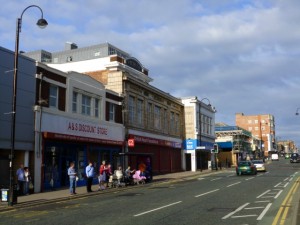
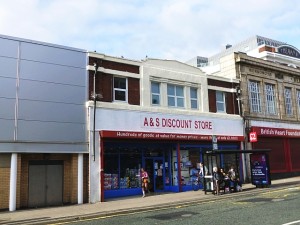
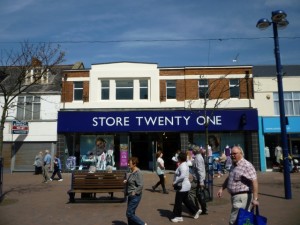


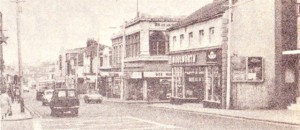
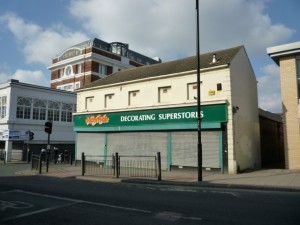




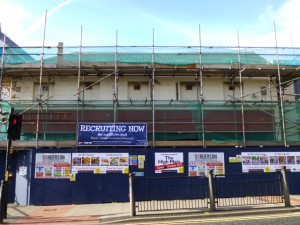

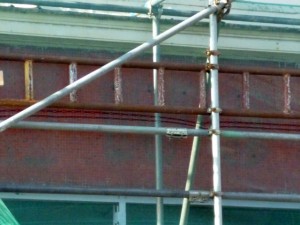








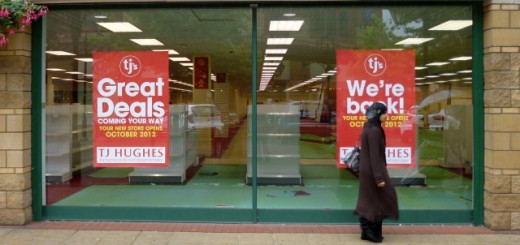


Your photo of A & J Discount stores as being in original Woolworths (photo above) surely isn’t correct? In that photo A & J Discount can clearly be seen on the LEFT of Beavans, Woolworths was on the opposite corner of Heaton Park Road from Beavans, therefore on the RIGHT!!!
When did the Grand Theatre close.Or Billy Bottos